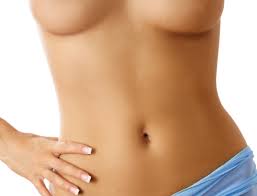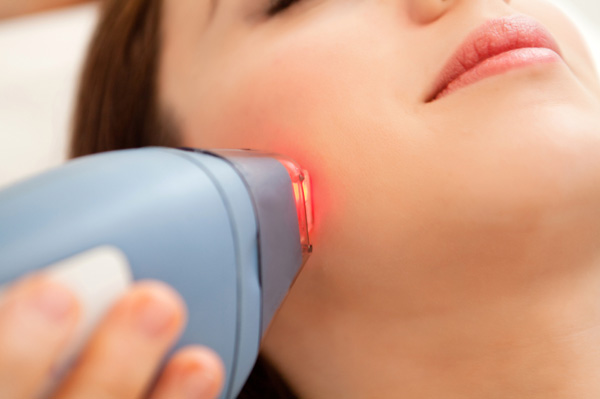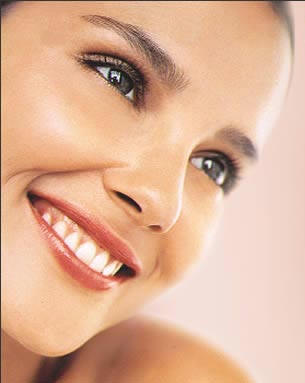By Sandra Tyler
19 Apr, 2015
Botox, Breast Augmentation, Butt Augmentation, Comfort Anesthesia, Cosmetic Getaways, Ear Surgery, Esthetician, extractions, Face Lift, facial, facial rejuvenation, facials, Featured Procedures, Fillers, hair removal, Juevederm, Labiaplasty, Laser, liposuction, Male Surgery, Misc, News & Blogs, Rhinoplasty, skin care, spa, Special Offers, Tummy Tuck
breast augmentation, facelift, lifestyle lift, lifstyle, liposuction, mommy makeover, tummy tuck
The 2014 plastic-surgery statistics will be released later today by the American Society for Aesthetic Plastic Surgery (ASAPS). Thanks to an advance peek, I can report that butts are getting bigger, while breasts are getting smaller.
Buttock augmentations are up 86 percent over 2013. Michael C. Edwards, a plastic surgeon and the president of the ASAPS notes that most women don’t want giant backsides, they just want more shapely ones. The other big news is breast revisions, which are up 30.4 percent. Many attribute that rise to aging implants in need of replacement, along with many women’s desire to switch from saline to silicone-gel-filled implants, which may not have been available when they originally had surgery. What’s more, insiders say most of these women are exchanging their old implants for smaller replacements.
The other news in the numbers is a five percent drop in overall procedures: 10,663,607 in 2014, down from 11,419,610 in 2013. The decrease was mostly in minimally-invasive procedures like Botox and fillers. No explanation for this was offered by the ASAPS, but could it be what I call injection fatigue? Many women I’ve spoken to don’t want to return again and again for refills. Surgical procedures fell only 1.5 percent from 1,883,048 to 1,764,956, a drop that the number crunchers say is not statistically significant.
Fat—and getting rid of it—is still a high priority. In recent years the top surgical procedures for women have flipped back and forth between breast implants and liposuction. In 2014, liposuction held the number one spot, followed by breast augmentation (down 8.5 percent), tummy tuck, blepharoplasty (or eye lift), and in fifth place, the breast lift. Facelifts are in eighth place.
Liposuction may still be king (or is it queen?) in the surgical department, but non-surgical fat reduction with devices such as CoolSculpting and VASERshape rose a whopping 42.7 percent, from 94,922 in 2013 to 135,448 in 2014. That number could rise even more this year if ATX-101, an injection for fat reduction under the chin, gets FDA clearance, which it’s expected to receive.
More
By Sandra Tyler
16 Mar, 2015
Esthetician, facial rejuvenation, facials, Laser, skin care, spa
boost collagen, broken capillaries, brown spots, facial redness, Facial Rejuvenation, intense pulse light, IPL, laser treatment, LED, light-emitting diode, photo facial, spider veins, treat acne
Laser resurfacing is a generic term for a skin treatment that uses some kind of light-based technology. Photo facials (sometimes called foto facials ) have a number of different uses, but are mostly used for treating brown spots, broken capillaries, and boosting collagen.
The two main types of technology used for photo facials are LED (light-emitting diode) and IPL (intense-pulsed light). They are completely different, so it’s extremely important to understand which photo facial technology is being used. That way you are more likely to get the results you hope to achieve.
An LED photo facial is a very gentle treatment that uses narrow spectrum light to boost collagen, which creates plumper, younger-looking skin, or to kill the bacteria that causes acne. This type of photo facial is more likely to be found in a day spa with a serious focus on esthetics.
LED photo facials are painless, cool and relaxing, and (unlike IPL or laser treatments) carry no risk of burning. The best results come after a series of photo facial treatments. To begin, a series of six treatments with a one-to two weeks between is recommended. After that, maintain with a treatment every month or two. It can be part of a facial or a stand-alone treatment.
LED photo facials are a good choice for people who want to boost collagen or treat acne. Their collagen-boosting, facial rejuvenation properties have been proven with medical research. The results won’t be as dramatic as plastic surgery, but it’s a gentler, more natural, less expensive way to go.
Medical spas have IPL (intense-pulsed light), which is a type of laser treatment, a photo facial. An IPL photo facial can treat a variety of skin conditions such as brown spots, broken capillaries, spider veins, and facial redness. An IPL photo facial delivers a bright blast of light at very high energy levels through a hand-held device. While some IPLs have cooling devices, it can be uncomfortable, even painful.
An IPL photo facial is the better choice if you have brown spots, broken capillaries or overall redness, called diffused facial redness. The number of IPL photo facials you need will vary depending on the condition you’re treating, the results you want, and how your skin responds.
Photo facials work best in conjunction with a regular skin care routine that you develop with your esthetician.
More
Some people have beautiful skin naturally, and some have to work at it. But clear skin is within the reach of everyone.
If you have blackheads, clogged pores and acne, it’s best to work with a good esthetician to clean up your skin with regular facials. She or he will recommend products that will help keep your skin clear. The products are more expensive, but they use better ingredients and are more effective and than the products on the drug store shelves.
If you’re young and your skin is beautiful and clear, don’t mess it up with overly aggressive treatments (i.e., destroying your skin with apricot kernel scrub). Again, having a quality skin care routine from a young age is important, and a good esthetician can help you set that up. The products you use can change depending on the season, where you live, your age, and your individual skin conditions.
Here are seven other habits you need to keep your skin beautiful:
- Eat a healthy diet with lots of fruits, vegetables and leafy green. Good nutrition is the basic building block of healthy skin.
- Drink plenty of water every day. (I fill a carafe to remind myself.)
- Cut out skin-damaging habits like smoking, excessive drinking, tanning booths and excessive sun exposure.
- Search out a good esthetician by asking friends and doing some research. Then work with her (or him) on a regular basis. Get a professional facial to deep cleanse your skin and review your product choices at least four times a year, as the seasons change. Every four to six weeks is ideal.
- Throw away the soap and use quality products that are right for your skin type. Discuss your home skin-care routine with an esthetician. If you can’t afford all the skin-care products right away, ask the esthetician which are most important to start. Invest in additional products as you can.
- Give yourself a home facial as often as once a week.
- Wear sunscreen, even on cloudy days and in winter. Use a good-quality, high-SPF, full-spectrum sunscreen. Sun damage is the single most important cause of premature aging. I use Ti-Silc Sheer SPF 45Sunblock compare prices. It’s reasonably priced and doesn’t sting sensitive skin. Remember to put sunscreen on exposed areas like the back of your hands, neck and chest. They’re often the first place to show your age.
More
By Sandra Tyler
16 Mar, 2015
Esthetician, facial, facials, skin care, spa
blackheads, clogged pores, facial, skin care, skin type, spa, treat yourself
How often you should get a facial depends on your skin type — normal, combination, dry, or oily. If you have oily, acne-prone skin with breakouts, blackheads and clogged pores, you should get a facial every two weeks until it is cleared out and calmed down. As you skin improves, you can stretch it out longer until you’re on a schedule where your skin stays relatively clean and clear. If you have normal, combination, and dry skin, a once-a-month facial is usually fine.
Skin condition is whatever the esthetician notices at the time of your facial — dryness, dehydration, redness, blackheads, dull skin, etc. You might come more often than monthly if you have acne, a lot of blackheads or whiteheads you want to get cleared out, or if you have skin that would benefit from a series of treatments like peels, light therapy, or microdermabrasion.
Other Factors That Affect How Often You Should Get A Facial
- Skin Care Goals. If you want to have your best possible skin for a lifetime, find a great esthetician early in life, get on a good skin care regime, and follow it. Not everyone puts a high priority on personal appearance.
- Age. Unless they have oily skin and breakouts, younger people can usually get facials less frequently because their skin naturally generates new cell growth faster. When you’re young, your biggest priority is to be on a good skin-care regime, keep the skin clear of blackheads, and have a strategy to deal with breakouts. As you age, you might go more often and spend more on treatments that are done in a series, such as peels, light therapy, or microdermabrasion.
- Budget. Income and budget affects how much money you have available for facials and skin care. Try to at least get a facial once every three months, and make the investment in quality products.
- Where You Live. Urban environments have more pollution that make your skin dirtier. If you’re prone to blackheads, you might need to be rigorous about your once-a-month schedule instead of stretching it out to six weeks.
Is There Such A Thing As Too Many Facials? Yes! Unless you have oily skin that needs clearing up or you’re doing a series that requires you to come in every week or two, once a month is sufficient. You can sensitize your skin if you overdo it.
More
* He or she is impeccably groomed, warm and friendly.
* She is a stickler for cleanliness and sanitation. She keeps a clean table and washes her hands before she begins touching your face. If you see a dirty environment or sticks in a messy wax pot, that’s not a good sign.
* The esthetician gives you a relaxing facial customized to your skin. She can do extractions without causing too much discomfort and is responsive to your pain threshold.
* He can answer any questions you have about what he’s doing and why.
* The good esthetician follows your lead in terms of how much “chat” there is. It’s your time!
* She asks about your home skin care routine and advises you on how to take care of your skin between facials. She advises you on what products are best suited for your skin without being pushy.
* A good esthetician recognizes skin problems that require a dermatologist. If you have a problem that needs a medical doctor, the esthetician lets you know.
Licensing requirements for estheticians vary by state. Most states require 600 hours of training, but Florida is considerably less strict, with just 260 hours of training. Feel free to ask where they were trained and what kind of program they went through.
If you’re interested in becoming part of the spa industry, read more about finding spa jobs, going to massage school, or going to esthetician school.
More





